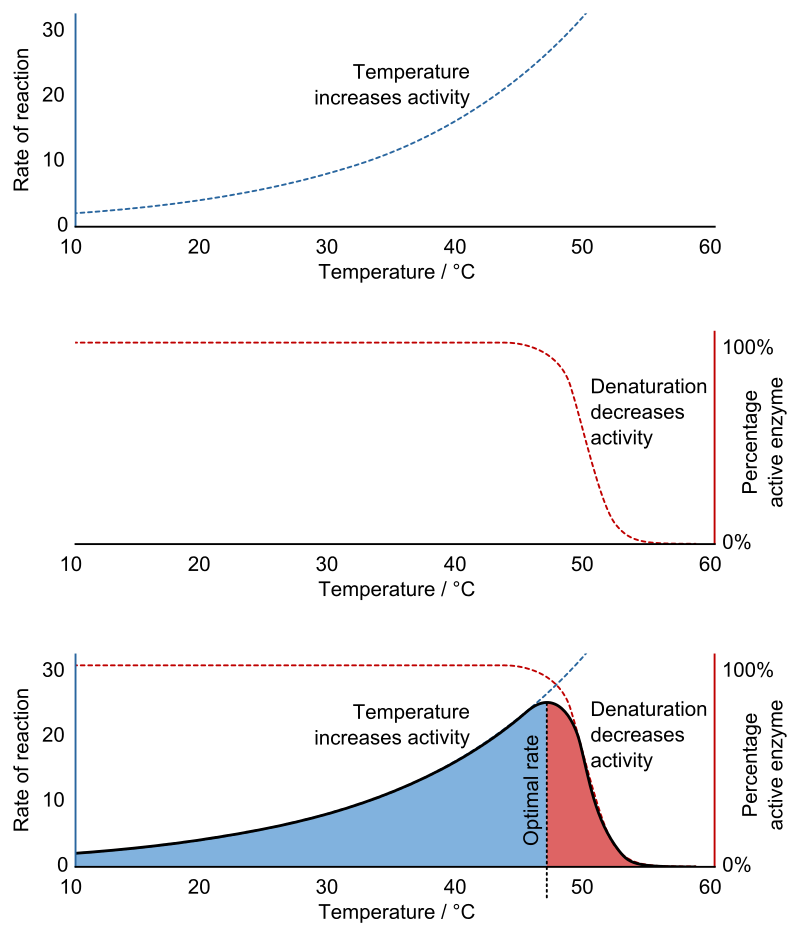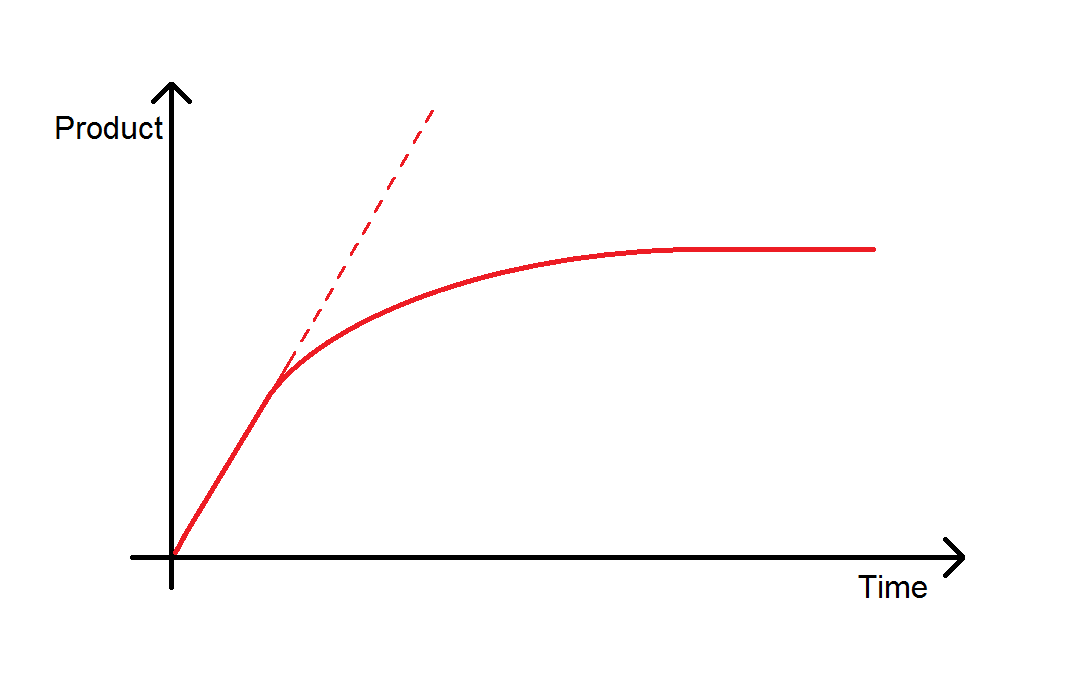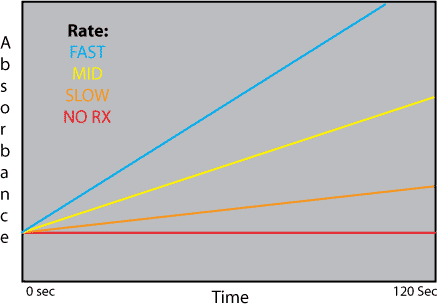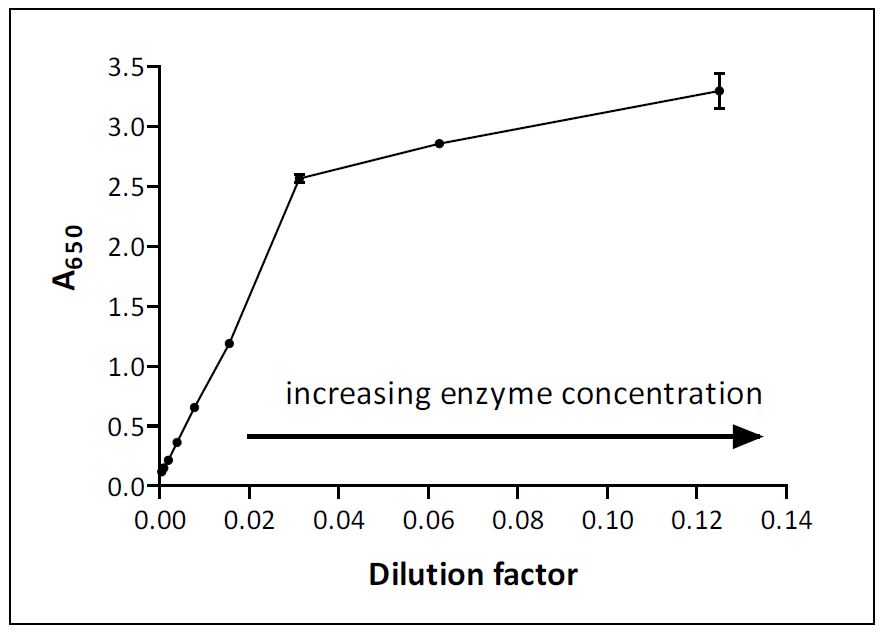Temperature was set at 37 C preheat and the plate was under continuous shaking with 230 rpm. CULTURE MEDIA A culture medium is any material prepared for growth of an organism in a laboratory setting.

Enzyme Activity Inhibition Structure Substrates Ph Temperature Video Lesson Transcript Study Com

9 8 The Effect Of Temperature On Enzyme Kinetics Chemistry Libretexts

Solved 1 3 The Effect Of Temperature 6 The Question Being Chegg Com
Changes in absorbance eg.

Why does temperature of enzyme affect absorbance. Enzyme An enzyme is a macromolecule that acts as a catalyst a chemical agent that speeds up a reaction without being consumed by the The structure of lactase allows for lactose molecule to be its substrate so it can break it down to glucose and galactose. The elementary enzyme-linked immunosorbent assay ELISA or enzyme immunoassay EIA is different from the other available antibody-based techniques in a way that in a polystyrene 96 or 384 multi-well plate which is considered good for protein binding the binding to solid surface sequentially results in the identification of specific reactions excluding the non-specific ones. Anionic blue neutral green and cationic red.
1 unit U is the amount if enzyme that catalyses the reaction of 1 nmol of substrate per minute under standard conditions. At constant temperature etc. For example assays typically are carried out at a temperature between 20-37C.
Lactase enzyme activity with data analysis answer key. It was not until the era of Robert Koch and his coworkers that Agar was introduced as a a common medium for bacterial growth. Factors that Affect Enzymatic Analysis.
Enzymes like all proteins have specific three-dimensional shapes. IR absorbance spectroscopy obeys the BeerLambert law whereby band absorbance is linearly related to concentration of the molecule in solution. Enzyme activity according to coconut maturity 1 A unit of enzyme activity refers to the amount of enzymatic extract necessary to produce an increase of absorbance at rates of 0001 unit per millilitre of sample per soluble solids content per minute U mL-1 Brix-1 min-1.
The enzyme changes shape to hold the substrate. The absorbance changes as the temperature increases. The iD5 reader measures TRF and FP and can be expanded to include TR-FRET HTRF BRET dual luciferase reporter assays with injectors and western blot detection.
List three conditions that would alter the activity of an enzyme. Under acidic conditions the red form of the dye is converted into its blue form binding to the protein being assayed. The concentration of enzyme was 010 mM and safranal concentration was considered from 00 to 015 mM.
One of the biggest challenges facing students taking IB chemistry is coming up with a good Internal Assessment IA idea. Try halving the enzyme and increasing it 15x or lowering it 15x. OD600 was measured from each well.
Higher temperatures tend to speed up the effect of enzyme activity while lower temperatures decrease the rate of an enzyme reaction. Its got to be something suitably demanding for diploma-level study its got to be something relevant to the chemistry syllabus its got to be something you cant just look up the answer to in a textbook and crucially its got to be a topic the student is. Excitation read was set to 556 nm and emission to 586 nm.
A spectrophotometer set at 500 nm was used to measure absorbance at the various pH levels every 20 seconds for 2 minutes. For Curious Students Study the simple cleavage of the alpha-14 glucosidic bonds by using maltose as the substrate and amyloglucosidase as the enzyme. Microbes that can be cultured on a petri-plate or in a test-tube containing media are said to grow under in vitro conditions within-glass.
Record results in the Data. However if the temperature is too high an enzyme will denature which causes the shape of the enzyme to change. Thus conditions which affect structure such as temperature pH ionic strength or the presence of detergents can affect the ability of aromatic residues to absorb light at 280 nm and change the value of the proteins extinction coefficient.
At 280 nm the difference was reported. The definition of the enzyme unit would be better expressed thus. NADPH at 340nm with dehydrogenases fluorescence viscosity pH or one of.
SpectraMax iD3 and iD5 are hybrid microplate readers with NFC functionality. Why is enzyme activity similar to but not exactly like a Lock and Key. All enzymes have an optimum pH value so above or below the optimum pH the H and OH- ions found in acids and alkalis can mess up the ionic bonds and hydrogen bonds that hold the enzymes tertiary structure together this makes the active site change shape so the enzyme is denatured.
Why Km does not depend on enzyme concentration if Km is the substrate. The higher absorbance values would indicate greater enzyme activity. Generally speaking an enzyme will be more active at 37C than at 20C.
The SpectraMax ABS and ABS Plus absorbance microplate readers provide the flexibility sensitivity and convenience for a wide range of assays such as ELISAs microbial growth and protein quantitationBoth readers feature an 8-channel read head for fast reads and a subset feature the temperature independent. This is because the collision rate increases with increasing temperature so enzyme-substrate complexes form more frequently. Tan et al 2014.
If the enzymes shape changes it cannot bind to the substrate. How does a high pH affect an enzyme activity quizlet. Measure the starch concentration after 10 minutes as in Step 2.
The table see 13 on test represents the results of an experiments where the effects of pH buffers on an enzyme found in saliva amylase were studies. UV absorbance is also affected by protein structure. Potato enzyme lab temperature.
This will not affect Km which remains the substrate concentration at which. Shingles sometimes called herpes zoster is an infection caused by the varicella-zoster virus. Explain the effects of temperature pH and substrate concentration on enzyme activity.
Each pepsin and the pepsin-safranal sample was heated in the temperature range of 318363 K. Graph should show an increase in the rate of reaction with an increase in temperature until the temperature is high enough to denature the protein 70C and above depending on the source of the amylase. Filterless readers provide consistent results with steady temperature regulation.
Record the absorbance as you did in the baseline run. Optics were read from the bottom of each well. This is the original assay and the reason why the enzyme is called invertase as it is an inversion of the rotation 3.
The Bradford assay a colorimetric protein assay is based on an absorbance shift of the dye Coomassie brilliant blue G-250The Coomassie brilliant blue G-250 dye exists in three forms. This allows the estimation of the association constant and thereby ΔG by measuring the decrease in the intensity of the free AH band on formation of an H-bond along with knowledge of the total amounts of each substance present. Continue to change the enzyme concentration adjust the volumes of the pH 5 buffer and the volume of the enzyme extract.
Enzyme Activity versus Enzyme Concentration Mix 05 10 15 20 and 25 ml of enzyme solutions with 5 ml of 10gl starch solution. To get started you will be copying the data on the table above to your spread sheet. The molecules are held in these shapeswhich are critical to the enzymes proper functioningby hydrogen bonds and other fairly weak bonds.
Fluorescence and absorbance readings were measured every 10 min over 8 h. Question 5 - How does temperature affect the activity of enzymes. The substrate is the hydrogen peroxide.

Enzyme Assays Sciencedirect
Lab 7 Enzymes Biology201

Enzymes

Biology Enzyme Reaction Rates University Of Birmingham

Effect Of Temperature On Enzyme Activity Download Scientific Diagram

Guide To Enzyme Unit Definitions And Assay Design Biomol Blog Resources Biomol Gmbh Life Science Shop

Temperature Enzyme Reaction Rates Effects Examples Expii

Effects Of Temperature On The Enzyme Activity Of Bglu2 The Absorbance Download Scientific Diagram
